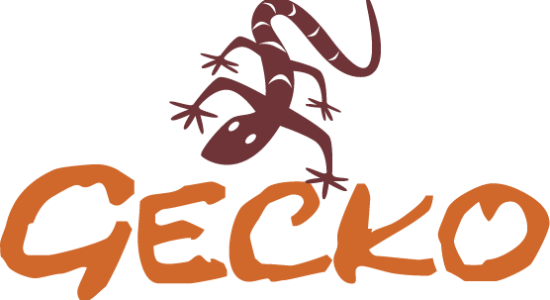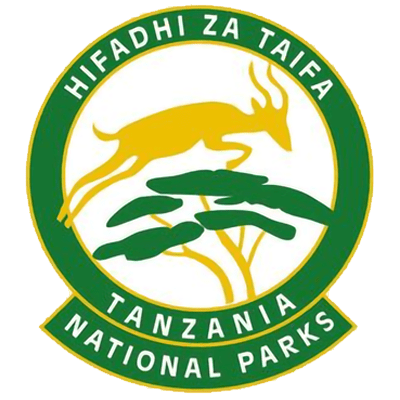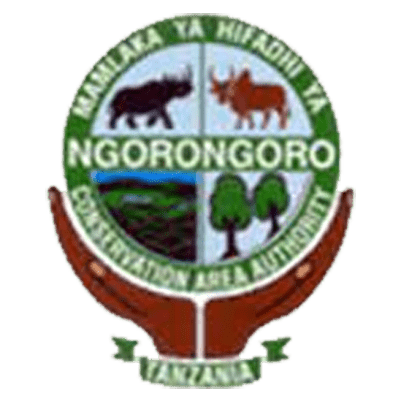13 Days
kilimanjaro combo packages
Call Our Expert Now
+255 784 991 576
Send an Enquiry
Fill Out The Online Enquire Form
Request Call Back
Enter a Time For Us to Call You
Tour Overview
Take a 12-day trek and safari with our expert team up Kilimanjaro using the MACHAME ROUTE and a safari in Northern Tanzania
- TOUR PROGRAM
Day 1:
Day 2: Moshi (915 m/3,000 ft) to Machame Gate (1,490 m/4,890 ft) to Machame Camp (2,980 m/9,780 ft) 12 km, 4-6 hours Montane Forest
Your day starts early with a briefing, followed by breakfast and a 50-minute drive from Moshi to the Machame Village (1,490 m/4,890 ft) where your guides and porters prepare and pack your equipment and supplies. You will receive a lunch pack, and you can also buy mineral water in the village. If the road is very muddy, it may be impossible to drive from the village to the Machame Gate, and in this case, it will take you an hour to complete the muddy 3 km walk to the gate.
After registering at the park office, you start your ascent and enter the rainforest immediately. Heavy rains on this side of the mountain often transform the trail into a soggy, slippery experience, so good footgear, trekking poles, and gaiters are useful. You will enjoy a welcome lunch stop halfway up and will reach the Machame camping area in the late afternoon.
Your porters will arrive at camp before you and will erect your tent before you arrive. In the evening, the porters boil drinking and washing water while the cook prepares your dinner. Night temperatures can drop to freezing at the Machame Camp.
Day 3: Machame Camp (2,980 m/9,780 ft) to Shira Camp (3,840 m/12,600 ft) 7 km, 4-6 hours -Moorland
You rise early at Machame camp, and after breakfast, climb for an hour to the top of the forest, then for 2 hours through a gentle moorland. After a short lunch and rest, you continue up a rocky ridge onto the Shira Plateau where you will be able to see Kilimanjaro’s great Western Breach with its stunning glaciers. Sometimes, the walls of the Western Breach are draped with extensive ice curtains.
You are now west of Kibo on the opposite side of the mountain from the Marangu Route. After a short hike west, you reach the Shira campsite. The porters will boil drinking and washing water before serving dinner. The night at this exposed camp will be colder, with temperatures dropping below freezing.
Day 4: Shira Camp (3,840 m/12,600 ft) to Lava Tower (4,630 m/15,190 ft) to Barranco Camp (3,950 m/12,960 ft) 13 km, 6-8 hours - Semi-Desert
After breakfast, you will hike east up a steepening path above the highest vegetation toward Kilimanjaro’s looming mass. After several hours, you walk through a rocky landscape to reach the prominent landmark called Lava Tower at 4,630 m/15,190 ft. This chunky remnant of Kilimanjaro’s earlier volcanic activity is several hundred feet high, and the trail passes right below it.
For extra credit, the sure-footed can scramble to the top of the tower. After a lunch stop near Lava Tower, descend for 2 hours below the lower cliffs of the Western Breach and Breach Wall to Barranco Camp at 3,950 m/12,960 ft. There are numerous photo opportunities on this hike, especially if the walls are festooned with ice. Barranco Camp is in a valley below the Breach and Great Barranco Walls, which should provide you with a memorable sunset while you wait for your dinner. On this day, be careful to notice any signs of altitude sickness.
Day 5: Barranco Camp (3,950 m/12,960 ft) to Barafu Camp (4,550 m/14,930 ft) 13 km, 7-8 hours - Alpine Desert
After spending a night under the imposing Great Barranco Wall, you climb this awesome obstacle, which turns out to be easier than it looks. Topping out just below the Heim Glacier, you can now appreciate just how beautiful Kilimanjaro really is. The route then heads down through the Karanga Valley and goes over intervening ridges and valleys to join the Mweka Route, which will be your descent route.
You have now completed the South Circuit, which offers views of the summit from many different angles. For now, all eyes are still on the summit, so turn left and hike up the ridge for another hour to the Barafu Hut. The last water on the route is in the Karanga Valley; there is no water at Barafu Camp, even though Barafu is the Swahili word for “ice.” The famous snows of Kilimanjaro are far above Barafu Camp near the summit of the mountain.
Your tent will be pitched on a narrow, stony, wind-swept ridge, so make sure that you familiarize yourself with the terrain before dark to avoid any accidents. Prepare your equipment and warm clothing for your summit climb. This should include replacing your headlamp and camera batteries, and to prevent freezing, consider carrying your water in a thermal flask. Go to bed at 7 PM, and try to get a few hours of precious sleep.
Day 6: Summit Day! Barafu Camp (4,550 m/14,930 ft) to Uhuru Peak (5,895 m/19,340 ft) to Mweka Camp (3,100 m/10,170 ft) 7 km up, 22 km down 8 hours up, 9-10 hours down - Scree and seasonal snow
You will rise around 11:30 PM, and after some steaming tea and biscuits, you shuffle off into the night. Your 6-hour climb northwest up through heavy scree between the Rebmann and Ratzel glaciers to Stella Point on the crater rim is the most challenging part of the route for most climbers. At Stella Point (5,685 m/18,650 ft) you stop for a short rest and a chance to see a supremely sanguine sunrise.
At Stella Point, you join the top part of the Marangu Route but do not stop here too long, as it will be extremely difficult to start again due to cold and fatigue. Depending on the season and recent storms, you may encounter snow on your remaining hike along the rim to Uhuru Peak. At the summit, you can enjoy your accomplishment and know that you are creating a day that you will remember for the rest of your life.
After your 3-hour descent from the summit back to Barafu Camp, you will have a well-earned but short rest, collect your gear, and hike down a rock and scree path into the moorland and eventually into the forest to Mweka Camp (3,100 m/10,170 ft). This camp is in the upper forest, so you can expect mist or rain in the late afternoon. Dinner and washing water will be prepared, and the camp office sells drinking water, soft drinks, chocolates, and beer!
Day 7: Mweka Camp (3,100 m/10,170 ft) to Mweka Gate (1,980 m/6,500 ft) to Moshi (890 m/2,920 ft) 10 km, 3-4 hours - Forest
After a well-deserved breakfast, it is a short, scenic, 3-hour hike back to the park gate. Don’t give your porters any tips until you and all your gear have reached the gate safely, but do remember to tip your staff at the gate. At Mweka Gate, you can sign your name and add details to a register.
This is also where successful climbers receive their summit certificates. Climbers who reached Stella Point are issued green certificates and those who reached Uhuru Peak receive gold certificates. From the Mweka Gate, you will continue down to the Mweka Village, possibly a muddy, 3 km, 1-hour hike if the road is too muddy for vehicles.
In the Mweka Village, you will be served a delicious hot lunch after which you are driven back to Moshi for an overdue hot shower and comfortable night in our Chanya Lodge or similar hotel.
Day 8:
This morning drive to Lake Manyara National Park. Set against the steep escarpment of the Rift Valley, you’ll find Lake Manyara National Park with its evergreen groundwater forest and variety of ecosystems including acacia woodland, grassy plains, a swampy fan delta, and – of course – the expansive lake.
This diversity attracts a wide variety of mammals, birds, and wildlife species. Manyara is also home to rare tree-climbing lions. The park offers excellent game viewing with buffalo, impala, giraffe, bushbuck, waterbuck, hippos, and lots of elephants roam near the lake. Also look out for blue monkeys, vervet monkeys, and the very active Olive baboon troops. Overnight Karatu Tented Lodge (with lunch, dinner & breakfast)
Day 9:
Head out after breakfast for the drive to Serengeti National Park. The word “Serengeti” is derived from the Maasai language, meaning “endless plain.” En-route to the Serengeti you can opt to visit as Maasai Village, a perfect place to explore Maasai culture and even participate in some tribal activities Or visit Olduvai Gorge, known as the Cradle of Humanity;
The Museum is a testament to the long journey that humanity has made from its humble roots in East Africa to its current state as the dominant species on earth. Enjoy a game drive en-route to your camp. Overnight Tukaone Serengeti Camp (with lunch, dinner & breakfast)
Day 10:
Head out after breakfast for the drive to Serengeti National Park. The word “Serengeti” is derived from the Maasai language, meaning “endless plain.” En-route to the Serengeti you can opt to visit as Maasai Village, a perfect place to explore Maasai culture and even participate in some tribal activities Or visit Olduvai Gorge, known as the Cradle of Humanity;
The Museum is a testament to the long journey that humanity has made from its humble roots in East Africa to its current state as the dominant species on earth. Enjoy a game drive en-route to your camp. Overnight Tukaone Serengeti Camp (with lunch, dinner & breakfast)
Day 11:
Enjoy a morning game drive in the Serengeti before your transfer to the Ngorongoro Conservation Area.Check-in at the lodge for an afternoon walking safari.
Walking with your local Maasai guide, hiking through the hills and plains of Maasai country you will get to know this ancient culture well, perhaps bumping into local herdsmen along the way or the many animals that cohabitate with them within the Ngorongoro Conservation Area. Overnight Rhino Lodge (with lunch, dinner & breakfast)
Day 12:
This morning, you will descend into the Ngorongoro Crater floor for game driving and exploration. The crater is 600m deep, 16 km across and 265 sq km in area. Enjoy the spectacular scenery and game viewing, in what has been described as the eighth wonder of the world.
Many of Tanzania’s last remaining black rhino can be seen grazing on the open grassland of the crater floor, surrounded by some of the 20,000 large animals that occupy the crater, including lion, cheetah, eland, zebra, and gazelle. Flamingo, among other bird species, can often be seen feeding at Makat Soda Lake as well. Afternoon drive back to Moshi for your overnight stay. Overnight Venus Premier Hotel (with lunch, dinner & breakfast)
Day 13:
- EXPECTED TO SEE




recommended on tripadvisor

TANZANIA TRAVEL
Specialist
Start planning your tailor-made holiday to tanzania tell us what you want, and we will tailor make your perfect trip.
- ENQUIRE THIS TOUR
What’s included:
- Delicious meals a day, boiled and filtered drinking water while on the mountain.
- All park entrance, camping, and rescue fees
- Warm water for washing to be provided every morning and evening.
- Oxygen Cylinder – only for emergency
- English Speaking Guides (Wilderness First Responder certified), cook and porters
- Staff salaries and fees.
- Transport to/from national park gates.
- First aid kit and pulse oximeter.
- Emergency telephone between the guides and our office in Moshi town.
- 3 liters of bottled drinking water to be provided on the first day of your hike, on the mountain porters will fetch water from the streams to be boiled and filtered for you.
What’s Not included:
- Prices Do Not Include Sleeping Bags
- Gratuities
- Soda/Alcohol Unless Otherwise Noted
- Health Insurance
- Visa Fees
- International Airfare
- Laundry
- All Meals And Drinks In Moshi Town
Start Planning Your Truly Bespoke Itinerary By Contacting One Of Our Destination Specialist.
Call/Whatsapp
+255 78 4991 576
recommended on tripadvisor

TANZANIA TRAVEL
Specialist
Start planning your tailor-made holiday to tanzania tell us what you want, and we will tailor make your perfect trip.
- ENQUIRE THIS TOUR















